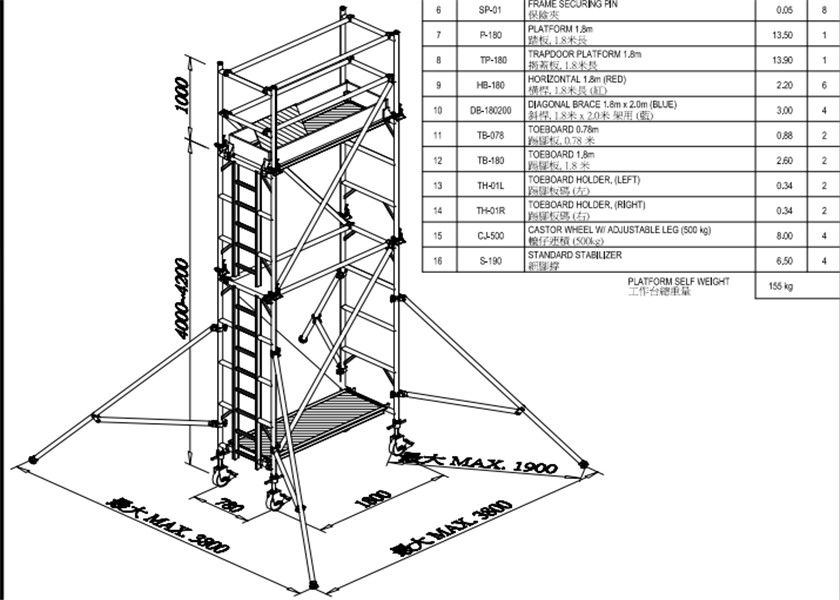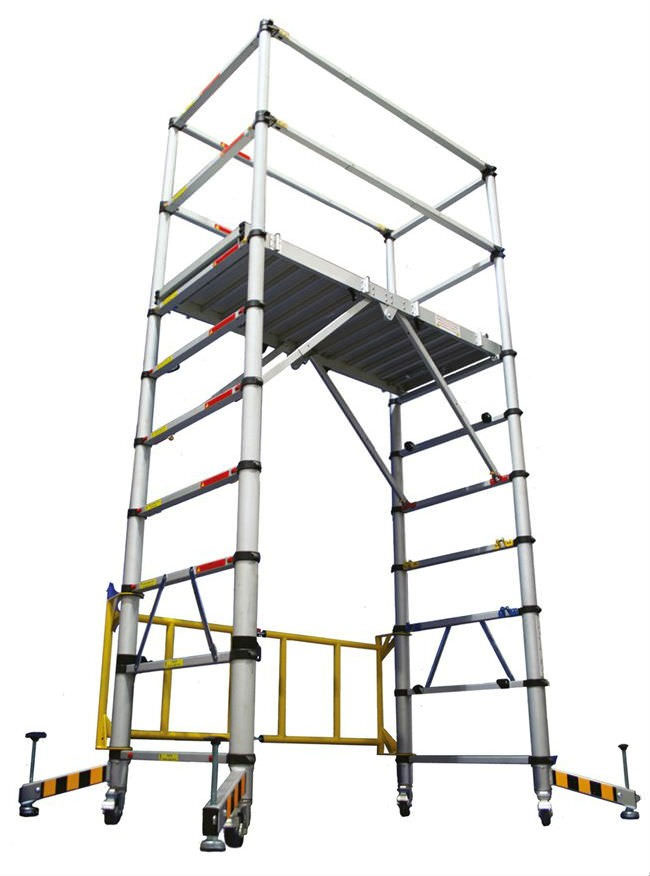Scaffolding Worldwide: One-of-a-kind Uses and Frameworks

Discover the globe's diverse scaffolding techniques. Asia features bamboo scaffolds - flexible, environment-friendly, with social roots. Europe flaunts dynamic frameworks like Amsterdam's red-brick facades and Burano's pastel structures. Africa blends practice and sustainability utilizing bamboo. South America utilizes rope and wood, showcasing neighborhood resourcefulness. The United States and Canada leads with advanced layouts, embracing innovation and advanced materials for more secure construction. The world offers a rich tapestry of scaffolding options one-of-a-kind to each region.
Bamboo Scaffolds in Asia
Throughout Asia, bamboo scaffolds have actually been made use of for centuries due to their versatility, resilience, and environmentally friendly nature. These lasting construction tools are deeply rooted in the area's social significance, mirroring an unified connection in between nature and human resourcefulness. Bamboo, a fast-growing and renewable resource, is not just abundant but also solid, making it a perfect material for scaffolding in building jobs across Asia.
The cultural relevance of bamboo scaffolds in Asia goes beyond their useful applications. They symbolize typical craftsmanship, durability, and flexibility, symbolizing the values of effort and innovation that are very respected in lots of Eastern cultures. Using bamboo scaffolding likewise highlights a dedication to sustainable techniques, as bamboo is eco-friendly and has a reduced environmental impact compared to standard metal scaffolds.
In countries like China, Japan, and Vietnam, bamboo scaffolds are an important part of the construction industry, showcasing a mix of ancient customs and modern techniques. The continued dependence on bamboo scaffolds in Asia emphasizes not just their efficiency however additionally their enduring heritage in the developed setting.
Vivid Frameworks in Europe
The vibrant building landscape of Europe is identified by a kaleidoscope of vivid frameworks that astound and influence visitors from worldwide. European cities showcase an abundant tapestry of lively patterns embellishing building work of arts that go back centuries. From the famous red-brick facades of Amsterdam to the pastel-hued buildings of Burano in Italy, each framework narrates with its distinct shade combination.
In Spain, the whimsical jobs of Antoni Gaud, such as the mosaic-clad Park G ell in Barcelona or the elaborate details of Casa Batll, stand as archetypes of Europe's vivid architectural marvels. Relocating northwards, the striking comparison of the blue-domed churches against the whitewashed buildings in Santorini, Greece, produces a picturesque scene that is etched in the minds of all who go to.
Whether it's the vibrant and intense hues of the structures or the delicate pastels that embellish historical sites, Europe's vibrant structures include a sense of beauty and magic to its already captivating building heritage.
Cutting-edge Styles in Africa
With a mix of custom and modernity, Africa's building landscape showcases cutting-edge designs that reflect the continent's rich social heritage and forward-thinking method. In the last few years, there has been a remarkable change in the direction of making use of lasting materials and entailing regional communities in the style and building and construction processes of buildings across Africa.
One example of innovative design in Africa is the use of lasting bamboo as a key construction material. Bamboo is abundant in many African areas, making it an affordable and environment-friendly alternative to standard building materials. This change towards lasting materials not just assists ensure the environmental influence of building yet likewise supports local economic climates.
Furthermore, area participation has actually become a central facet of building tasks in Africa. Architects and builders are significantly collaborating with neighborhood areas to incorporate their typical expertise and cultural methods right into modern designs. This method not just ensures that the developed environment meets the demands of individuals that will use it however likewise cultivates a feeling of possession and satisfaction amongst community participants. By welcoming sustainable products and area participation, Africa's ingenious building designs are not just aesthetically pleasing however additionally socially and eco conscious.
Conventional Approaches in South America
In South America, typical building approaches have actually long been linked with the region's rich cultural heritage and building background, forming the developed environment in special and enduring methods. Among the prominent conventional scaffolding techniques in South America involves using rope techniques and wood platforms. https://peckhamscaffolding.co.uk This approach reflects the ingenuity and resourcefulness of regional building contractors, that make use of natural materials to create tough and flexible support frameworks for building jobs.
Rope methods are frequently employed to safeguard the wooden platforms at various heights, enabling employees to gain access to hard-to-reach areas throughout the building procedure. These systems are generally made from in your area sourced timber, giving a lasting and cost-effective option for scaffolding demands. Making use of ropes not only enhances adaptability and movement on building and construction sites but also demonstrates the competent craftsmanship passed down via generations.
In South America, the integration of rope strategies and wooden platforms in conventional scaffolding exhibits a harmonious mix of social practices and functional building approaches, showcasing the region's rich architectural heritage.
Futuristic Scaffolding in The United States And Canada
Progressing beyond conventional methods, North America showcases innovative strategies to scaffolding that accept sophisticated technology and modern-day layout principles. Futuristic scaffolding in North America integrates robotic support and makes use of advanced products to change building procedures.
Robot help plays a critical duty in boosting performance and safety and security on construction sites. Automated robot systems are employed to assist in the assembly and disassembly of scaffolding frameworks, reducing the demand for manual labor and reducing the risk of accidents. These robots are outfitted with advanced sensing units and software application that allow them to navigate complex environments with accuracy and rate.

In addition, using sophisticated products such as carbon fiber and composite alloys in scaffolding layout supplies raised durability and toughness while keeping a light-weight account. These materials provide exceptional load-bearing ability, enabling taller and extra complex scaffolding arrangements to be recognized.
Regularly Asked Questions
What Are the Environmental Effects of Making Use Of Bamboo Scaffolds in Asia?
Bamboo scaffolds in Asia, while standard and lasting, pose both favorable and negative ecological influences. They advertise cultural preservation and usage indigenous materials, but deforestation for bamboo harvesting can be destructive if not handled sustainably.
Exactly how Do the Colorful Frameworks in Europe Mirror the Cultural Heritage of the Area?
Vivid structures in Europe show the region's rich social heritage via their elaborate layouts and dynamic tones. These structures act as architectural assimilation of historical customs, showcasing cultural importance and artistic expressions one-of-a-kind to each nation.
What Products Are Frequently Used in the Innovative Designs of Scaffolding in Africa?
In Africa, bamboo technologies are a famous function in the design of scaffolding frameworks. Sustainable materials like bamboo are typically made use of because of their strength and green residential or commercial properties, showcasing a harmonious mix of technology and ecological awareness in building and construction methods.
How Do Typical Techniques of Scaffolding in South America Differ From Modern Construction Techniques?

Typical strategies of scaffolding in South America often include making use of locally sourced materials like bamboo and timber, mirroring social techniques. These techniques vary from modern construction techniques that depend on steel and light weight aluminum structures for raised effectiveness and longevity.
What Developments in Modern Technology Have Influenced the Development of Futuristic Scaffolding in The United States And Canada?
Improvements in technology, such as online fact and robotics, have substantially influenced the advancement of futuristic scaffolding in The United States and Canada. These innovations have actually reinvented safety, performance, and accuracy in construction jobs, leading to groundbreaking frameworks.
Verdict
To sum up, scaffolding has actually been utilized in numerous distinct means and frameworks all over the world. From bamboo scaffolds in Asia to vivid frameworks in Europe, ingenious designs in Africa, conventional methods in South America, and advanced scaffolding in The United States and Canada, each area showcases its very own distinct technique to scaffolding.
These varied uses scaffolding highlight the creative thinking and flexibility of building and construction methods throughout various continents.
